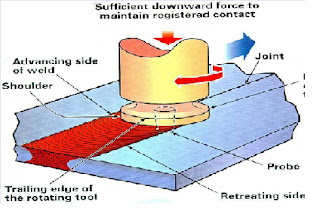Friction welding
Friction welding is a process that generates heat through mechanical friction between a moving work piece and a stationary component; it is achieved through frictional heat. Consider its uncompromised welding quality and cost efficient operation, this process is widely used in aviation, automotive and many other industries.
Friction welding has many advantages such as Low shrinkage, welding produces a 100% cross sectional weld area and heat is only generated at welding area which avoids grain growth in engineered materials.
The other type of welding is liner friction welding. This involves rubbing one component across the face of a second rigidly clamped component, using a linear reciprocating motion.
The last type is Friction Stir Welding. A cylindrical-shouldered tool, with a profiled threaded/unthreaded probe (nib or pin) is rotated at a constant speed and fed at a constant traverse rate into the joint line between two pieces of sheet or plate material, which are butted together. The parts have to be clamped rigidly onto a backing bar in a manner that prevents the abutting joint faces from being forced apart. The length of the nib is slightly less than the weld depth required and the tool shoulder should be in intimate contact with the work surface. The nib is then moved against the work, or vice versa.





No comments:
Post a Comment